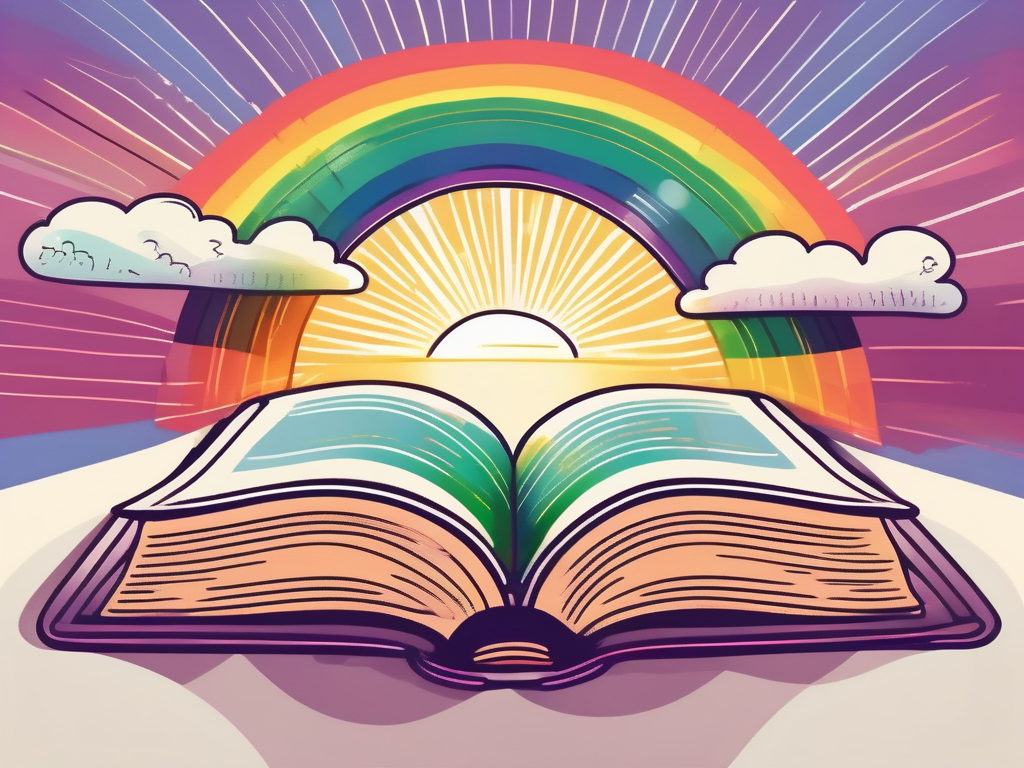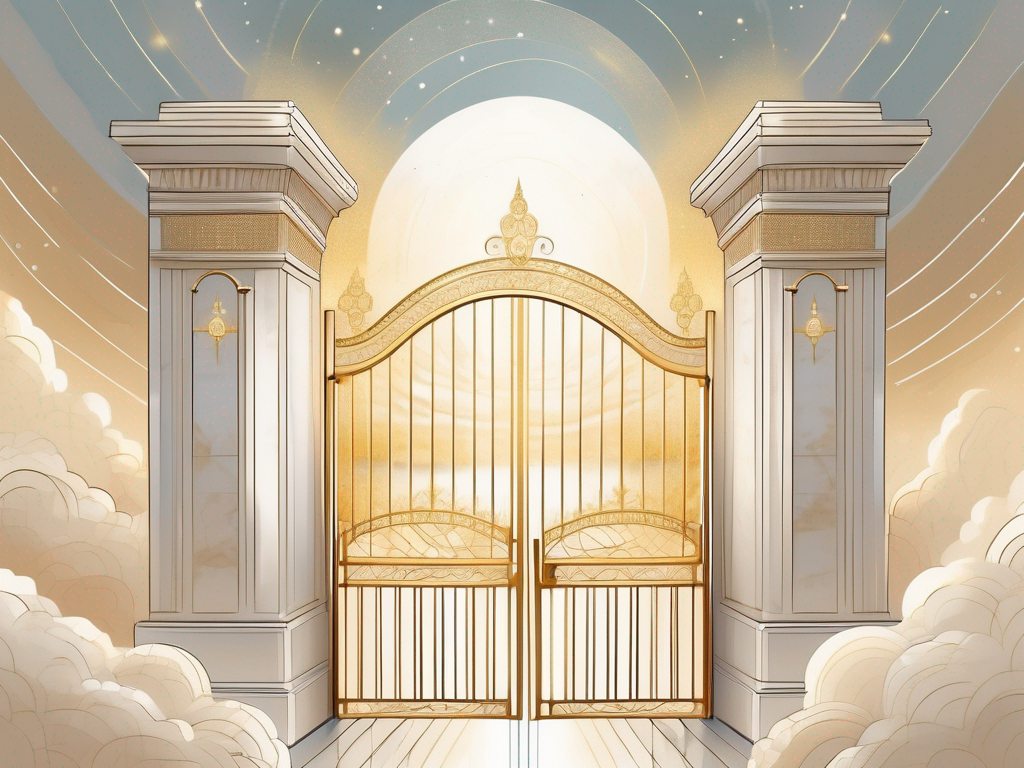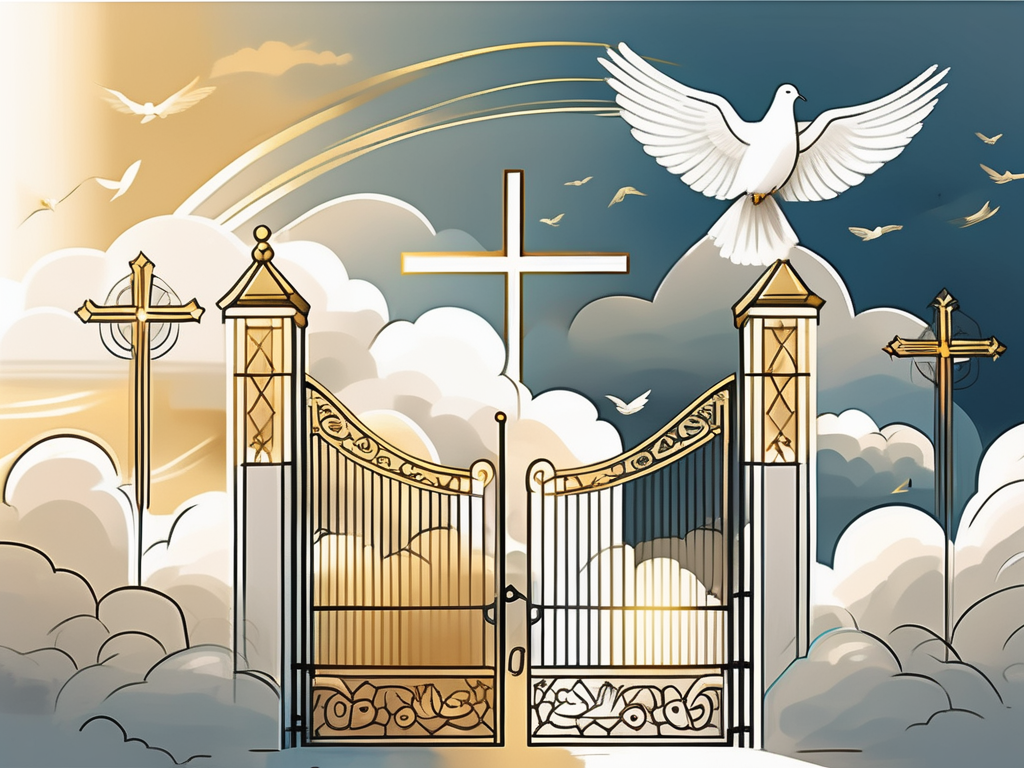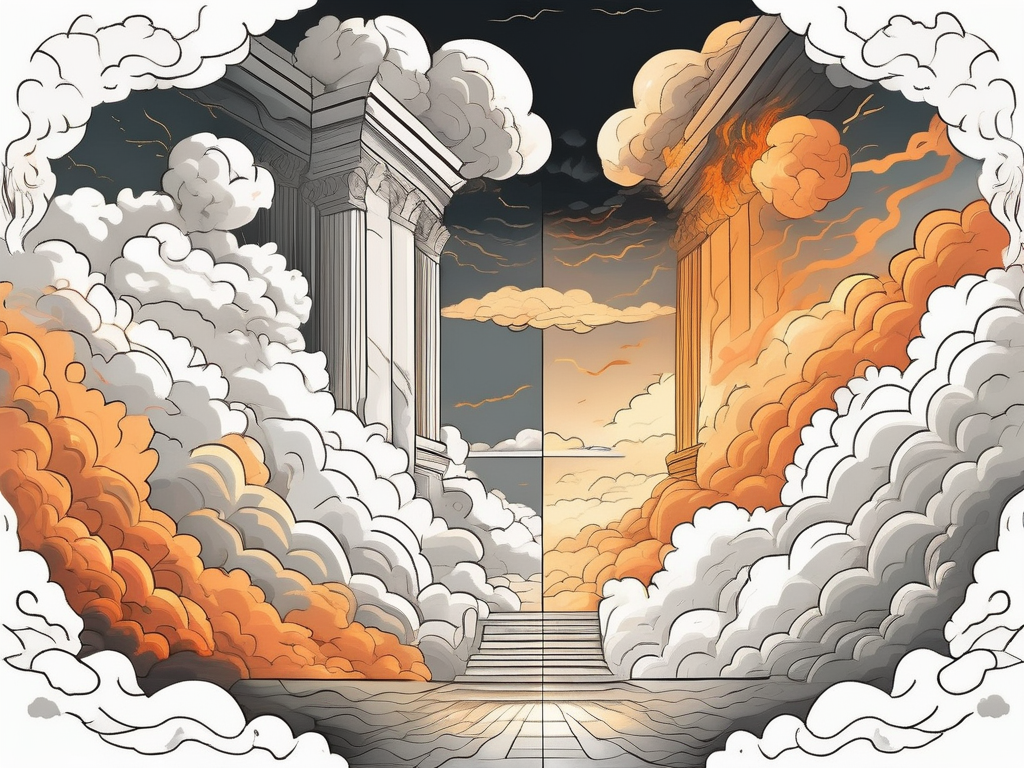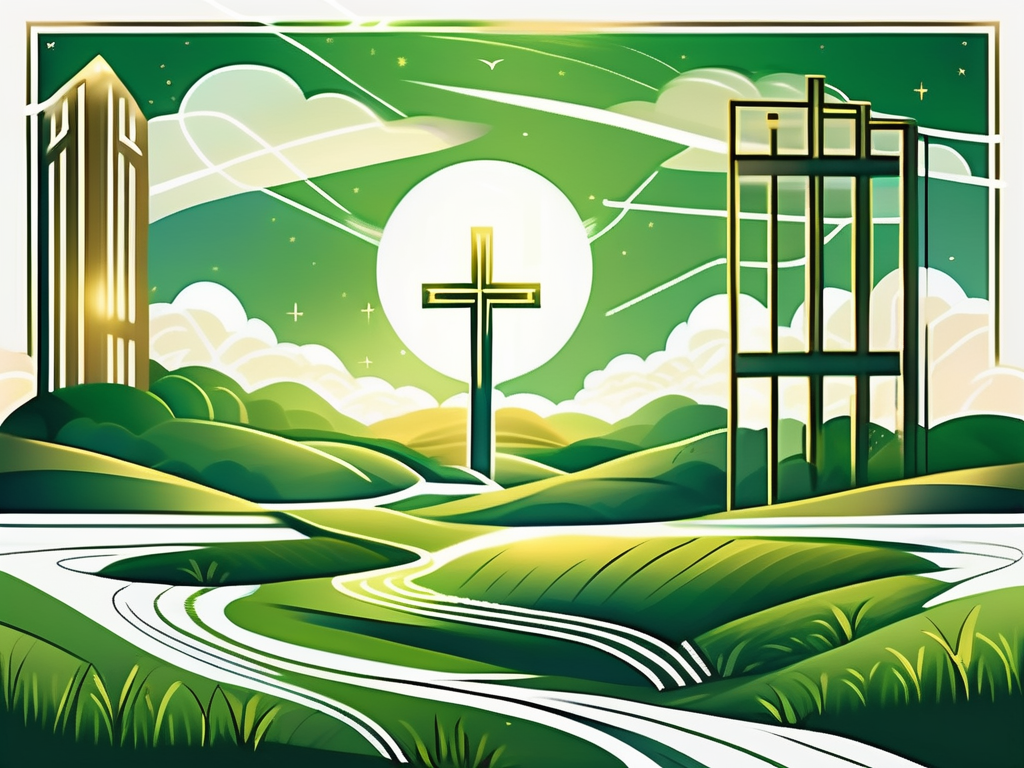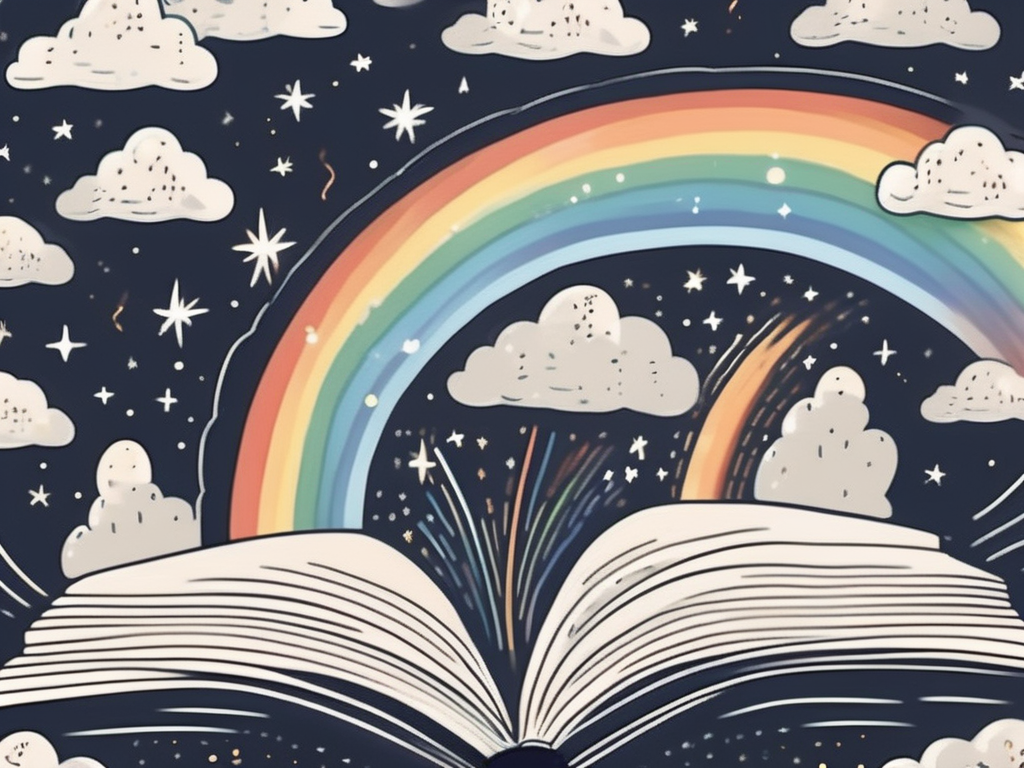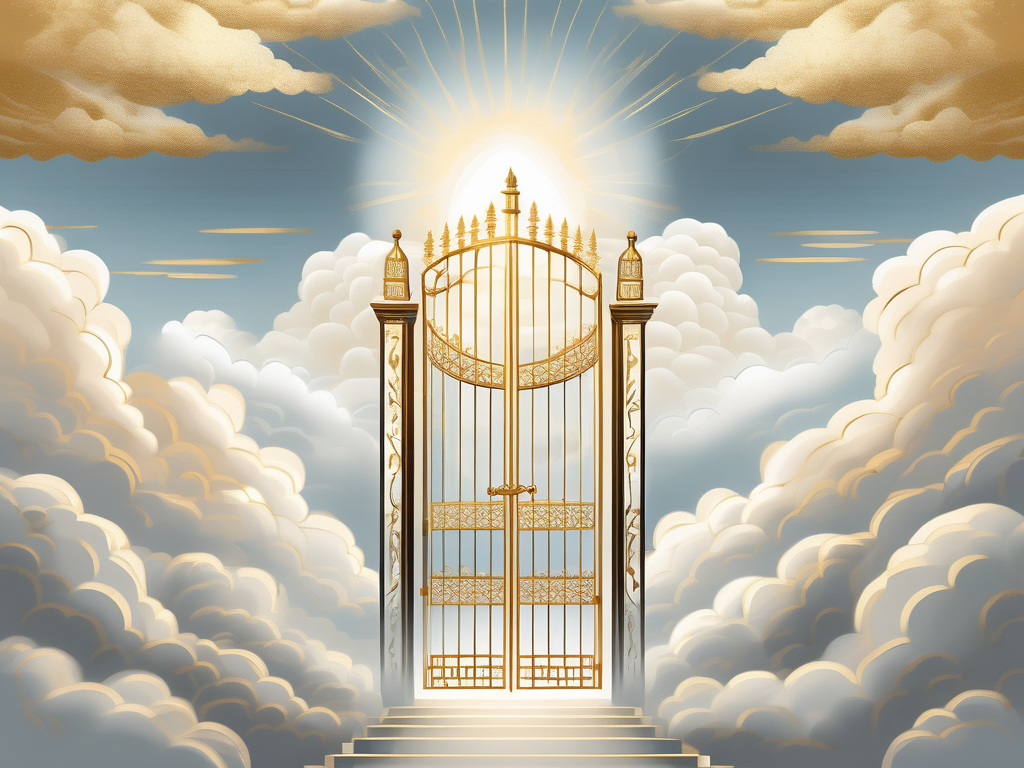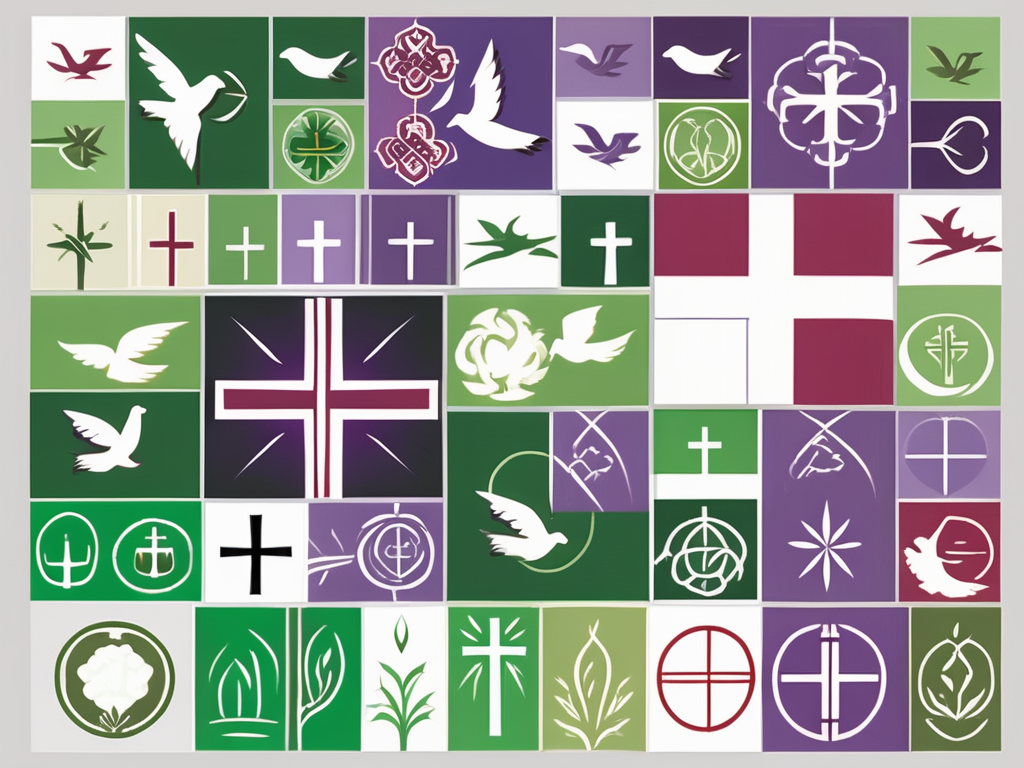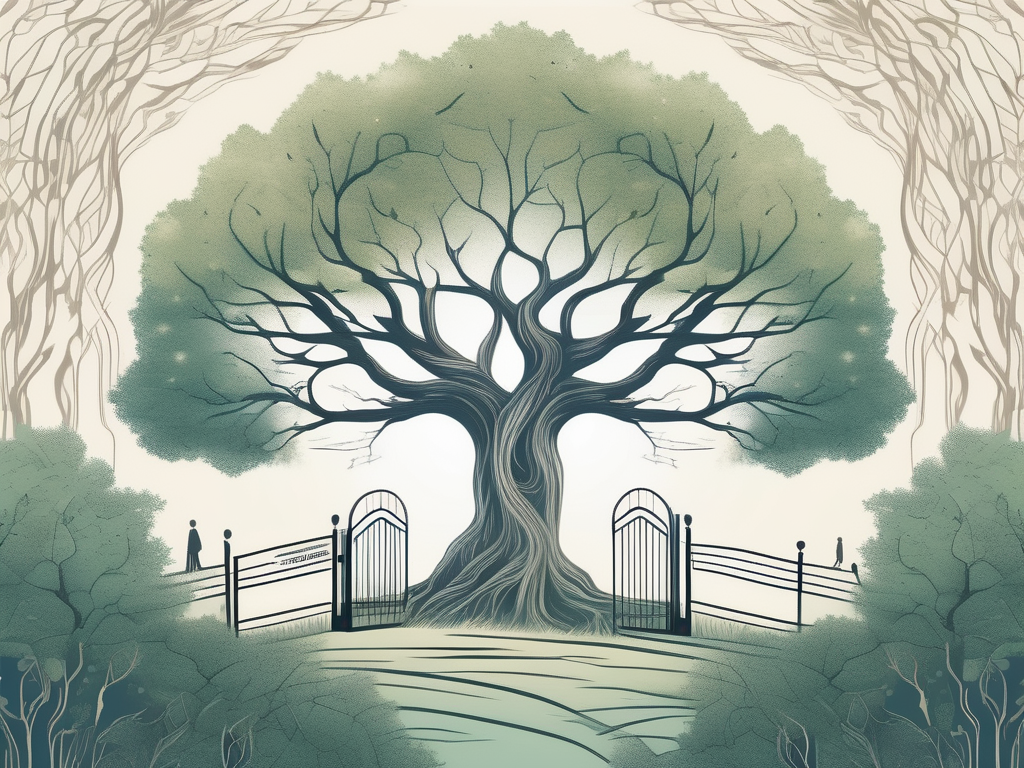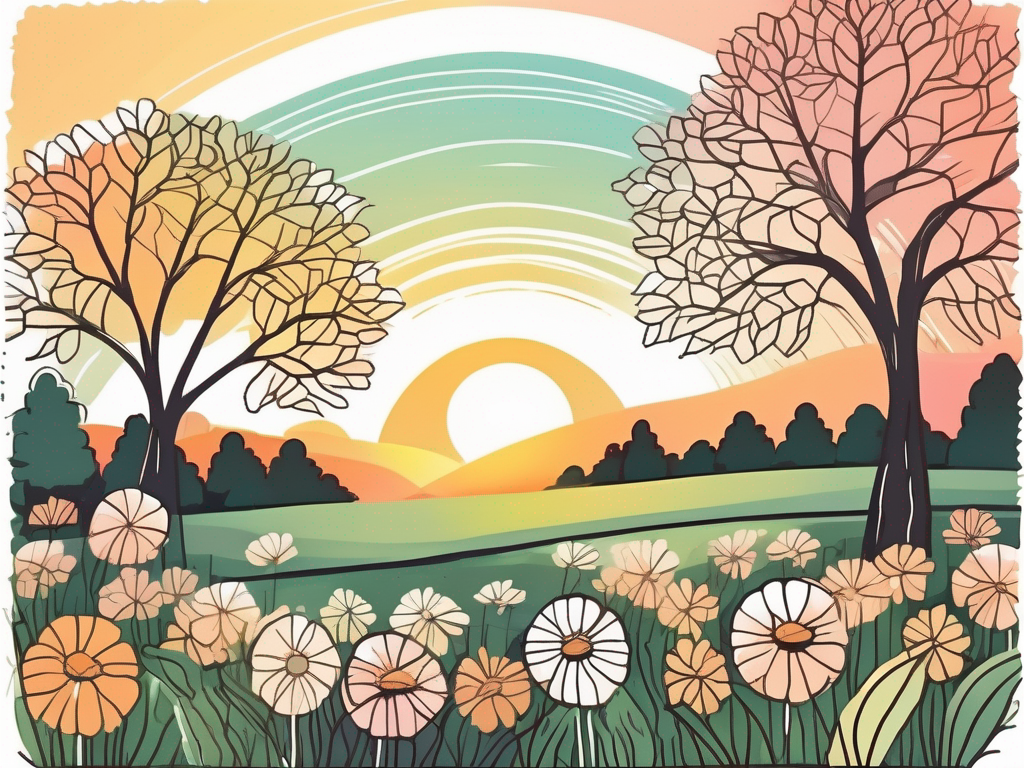Rainbows have always captivated human imagination with their vibrant colors and elusive beauty. In addition to being a natural phenomenon, rainbows hold significant symbolism in various cultures and religions, including Christianity. In this article, we will explore what the Bible says about rainbows and delve into their meaning and theological perspectives.
Understanding the Symbolism of Rainbows in the Bible
Before we dive into the biblical references, it is crucial to understand the symbolism behind rainbows in the Bible. Rainbows, in essence, represent a divine connection between heaven and earth, serving as a visual reminder of God’s presence and promises.
When we look at a rainbow, we are reminded of the beauty and wonder of God’s creation. It is a breathtaking display of colors that stretches across the sky, capturing our attention and filling us with awe. Just as the rainbow bridges the gap between the heavens and the earth, it symbolizes the bridge between God and humanity.
The colors of the rainbow also hold significance. Each color represents a different aspect of God’s character and attributes. Red symbolizes His love and sacrifice, orange represents His creativity and passion, yellow signifies His joy and light, green represents His growth and renewal, blue symbolizes His peace and tranquility, indigo represents His wisdom and understanding, and violet signifies His royalty and majesty.
The Biblical Origin of Rainbows
The first mention of a rainbow in the Bible can be found in the book of Genesis. After the great flood, when Noah and his family emerged from the ark, God set a rainbow in the sky as a sign of His covenant with all living creatures. It was a proclamation of God’s mercy and promise to never again destroy the earth by flooding.
Imagine the awe and wonder that Noah and his family must have felt when they saw the rainbow for the first time. It was a powerful and tangible reminder of God’s faithfulness and love. In that moment, they knew that God had not abandoned them, but had made a covenant to protect and provide for them.
As the floodwaters receded and life began to flourish again, the rainbow served as a beacon of hope and a reminder of God’s grace. It was a symbol of new beginnings and a fresh start for humanity.
Rainbows as Divine Promises
Throughout the Bible, we see rainbows as symbols of divine promises. Whenever a rainbow appeared, it served as a visual affirmation of God’s faithfulness and His commitment to fulfilling His word. Rainbows remind us that God keeps His promises, providing hope and assurance in times of uncertainty.
When we face challenges and difficulties, the sight of a rainbow can bring comfort and reassurance. It reminds us that God is with us, guiding us through the storms of life and leading us to brighter days ahead. Just as the rainbow follows the rain, God’s promises follow our trials, bringing beauty and restoration.
It is important to note that rainbows are not just physical phenomena, but spiritual symbols as well. They remind us of the spiritual promises God has made to His people, such as the promise of salvation through Jesus Christ. Just as the rainbow spans across the sky, God’s love and grace extend to all people, inviting them into a relationship with Him.
Rainbows and the Covenant with Noah
The covenant God made with Noah illustrates the deep meaning rainbows hold in Christianity. It signifies the establishment of a sacred agreement between God and humanity, promising to never forsake His creation. Rainbows serve as a constant reminder of this everlasting covenant and the faithfulness of God.
When we see a rainbow, we are reminded of God’s unwavering love and His desire to be in relationship with us. It is a symbol of His enduring presence and His commitment to walk with us through every season of life. Just as the rainbow is a bridge between heaven and earth, the covenant with Noah bridges the gap between God and humanity, offering us the opportunity to experience His grace and salvation.
As we reflect on the symbolism of rainbows in the Bible, may we be reminded of God’s faithfulness and His promises. May the sight of a rainbow fill us with hope and assurance, knowing that God is with us and that His love never fails.
Interpretations of Rainbow References in the Bible
Besides the account of the rainbow covenant with Noah, the Bible contains other instances where rainbows are mentioned. Let’s explore a few of these references.
Rainbows in the Book of Genesis
In the book of Genesis, rainbows appear as significant symbols beyond the covenant with Noah. The story of Joseph, with his multicolored coat, is often associated with rainbows, reflecting God’s plan and provision even in times of adversity.
Joseph’s coat of many colors, given to him by his father Jacob, was a tangible representation of the rainbow’s vibrant hues. It symbolized God’s favor and divine intervention in Joseph’s life, despite the hardships he faced. Just as the rainbow brought hope and promise after the flood, Joseph’s coat served as a reminder that God’s faithfulness endures even in the darkest of times.
Furthermore, the rainbow in Joseph’s story also represents reconciliation and restoration. When Joseph revealed his identity to his brothers, who had sold him into slavery, he forgave them and embraced them. This act of forgiveness and reconciliation mirrored the rainbow’s message of peace and harmony between God and humanity.
Rainbows in the Book of Revelation
In the book of Revelation, rainbows are mentioned in the context of heavenly visions. John, the author, describes a rainbow around the throne of God, emphasizing divine glory and the eternal nature of God’s promises.
The rainbow encircling the throne of God in John’s vision symbolizes the unchanging nature of God’s covenant with His people. It serves as a reminder that God’s promises are steadfast and everlasting, providing comfort and assurance to believers. Just as the rainbow spans across the sky, connecting heaven and earth, the rainbow in Revelation signifies the unbreakable bond between God and His creation.
Additionally, the rainbow’s presence in the heavenly realm signifies the beauty and splendor of God’s glory. It reflects the magnificence and majesty of the divine, captivating all who behold it. The rainbow’s radiant colors serve as a visual representation of God’s infinite love and grace, shining brightly in the celestial realm.
Rainbows in the Book of Ezekiel
Ezekiel, a prophet in the Old Testament, also had a vision involving a rainbow. The radiant appearance of the rainbow around the glory of the Lord signifies God’s transcendent presence, awe-inspiring and beyond human comprehension.
Ezekiel’s vision of the rainbow surrounding the glory of the Lord showcases the divine holiness and transcendence of God. The rainbow’s ethereal beauty and brilliance serve as a testament to God’s incomparable greatness, leaving Ezekiel in awe and wonder.
Moreover, the rainbow’s presence in Ezekiel’s vision signifies God’s faithfulness and steadfastness. Just as the rainbow is a symbol of God’s covenant with Noah, it also represents God’s unwavering commitment to His people. The rainbow’s appearance in Ezekiel’s vision serves as a reminder that God’s presence is constant and unchanging, even in the midst of uncertainty and chaos.
In conclusion, the Bible contains various references to rainbows, each carrying its own significance and message. From the story of Joseph in Genesis to the heavenly visions in Revelation and Ezekiel, rainbows symbolize God’s faithfulness, glory, and transcendence. They remind us of God’s promises, His unbreakable covenant, and His everlasting love for humanity. Just as the colors of the rainbow span across the sky, so do the interpretations and meanings of these beautiful symbols in the Bible.
Theological Perspectives on Rainbows
From a theological standpoint, rainbows hold deep meaning and convey essential truths about God’s character and relationship with humanity.
But what if there is more to rainbows than what meets the eye? What if these colorful arcs in the sky hold even deeper theological significance? Let us delve into the theological perspectives on rainbows and explore the rich symbolism they carry.
Rainbows as Signs of God’s Mercy
Rainbows showcase God’s mercy and compassion towards His creation. They remind us that even in the face of our shortcomings and the brokenness of the world, God extends His grace unconditionally.
Imagine a world without rainbows. It would be a world devoid of color, a world where hope is scarce. But God, in His infinite love, painted the sky with vibrant hues to remind us of His mercy. Each time we witness a rainbow, we are reminded of God’s unwavering love and His willingness to forgive.
Just as the colors of a rainbow blend seamlessly together, God’s mercy encompasses all aspects of our lives. It is not limited by our failures or shortcomings. Instead, it reaches out to us, offering hope and restoration.
Rainbows as Symbols of Hope
Rainbows inspire hope in the midst of challenges. Just as the colors of a rainbow harmoniously blend together, they illustrate the beauty that can emerge from diverse experiences and adversity—a promise that God is working all things together for the good of those who love Him.
Think about the stormy weather that often precedes the appearance of a rainbow. The dark clouds and pouring rain symbolize the trials and tribulations we face in life. But as the storm passes, the radiant colors of the rainbow emerge, reminding us that there is always hope on the horizon.
Just as the rainbow bridges the gap between earth and sky, it serves as a bridge between our present struggles and a future filled with promise. It reminds us to hold on, to persevere, and to trust in God’s faithfulness.
Rainbows and the Concept of Divine Glory
When rainbows encompass the presence of God in biblical accounts, they symbolize His divine glory and majesty. Rainbows reveal glimpses of God’s magnificence and remind us of our place as His beloved creations, invited into a relationship with the Almighty.
Imagine standing in awe as a rainbow arcs across the sky, its vibrant colors illuminating the landscape. In that moment, we catch a glimpse of God’s glory. We are reminded of His power and sovereignty over all creation.
Just as the rainbow is a reflection of light, we are called to reflect God’s glory in our lives. We are invited to live in a way that brings honor and praise to His name, just as the rainbow brings beauty and wonder to the world.
As we contemplate the theological perspectives on rainbows, let us not simply admire their beauty but also embrace the profound truths they reveal. May rainbows serve as a constant reminder of God’s mercy, hope, and glory in our lives.
Modern Christian Views on Rainbows
Even today, rainbows continue to hold significance within Christian communities and artistic expressions.
When we think of rainbows, we often associate them with the story of Noah and the Great Flood. In the book of Genesis, after the floodwaters receded, God placed a rainbow in the sky as a sign of His covenant with humanity, promising never to destroy the earth by flood again. This biblical account has shaped the way Christians view rainbows, seeing them as a symbol of God’s faithfulness and His enduring love for His creation.
However, rainbows hold even deeper meaning in contemporary Christian art. Many talented artists incorporate rainbows into their works, using them as symbols of hope and divine promises. These artistic representations serve as visual reminders of God’s faithfulness and the enduring hope found in Him. Through their art, these artists seek to inspire and uplift believers, reminding them of the promises God has made and the hope they can find in Him.
Rainbows in Contemporary Christian Art
Many contemporary Christian artists incorporate rainbows into their works as symbols of hope and divine promises. These artistic representations serve as visual reminders of God’s faithfulness and the enduring hope found in Him.
One such artist is renowned painter John Smith, whose vibrant and captivating paintings often feature rainbows. In his masterpiece, “Promise of Redemption,” Smith depicts a majestic rainbow stretching across a stormy sky, symbolizing God’s promise of redemption and restoration. The colors of the rainbow are meticulously blended, creating a sense of harmony and peace amidst the chaos of the storm. Through his art, Smith invites viewers to reflect on the beauty of God’s promises and find solace in His unfailing love.
Another artist, Sarah Thompson, expresses her deep faith through intricate stained glass creations. In her latest work, “The Covenant of Grace,” Thompson skillfully weaves together various shades of colored glass to form a stunning rainbow. The light passing through the glass casts a mesmerizing display of colors, illuminating the space with a sense of divine presence. Through her art, Thompson aims to create a sacred space where believers can experience the beauty and peace that comes from embracing God’s promises.
Rainbows as Symbols in Christian Celebrations
Christian celebrations often incorporate rainbows into their symbolism, especially during events connected to God’s promises and grace. From baptisms to weddings, rainbows become a powerful reminder of God’s loving presence and the covenant relationship believers share with Him.
During baptisms, for example, rainbows are often incorporated into the ceremony as a symbol of new life and God’s promise of salvation. As the person being baptized emerges from the water, a rainbow-colored cloth is draped over their shoulders, symbolizing their entrance into a new covenant relationship with God. This visual representation serves as a reminder of God’s grace and the transformative power of His love.
In weddings, rainbows are also used symbolically to represent the covenant between a husband and wife. As the couple exchanges their vows, a rainbow-colored ribbon is wrapped around their hands, signifying their commitment to love and support each other, just as God remains faithful to His promises. This beautiful symbol serves as a constant reminder of the sacred bond they share and the importance of keeping their marriage centered on God’s love.
The Role of Rainbows in Christian Teachings Today
Rainbows remain essential elements in Christian teaching. Sermons, Bible studies, and devotionals often draw on the symbolism of rainbows to convey biblical truths and encourage believers to trust in God’s promises.
During a sermon on God’s faithfulness, a pastor may use the image of a rainbow to illustrate how God keeps His promises throughout history. By recounting the biblical accounts of God’s covenant with Noah and His promise to Abraham, the pastor reminds the congregation that God is trustworthy and His promises are sure. The rainbow becomes a tangible symbol of God’s faithfulness, inspiring believers to trust in His unfailing love in the midst of life’s challenges.
In Bible studies and devotionals, rainbows are often explored as a metaphor for the Christian journey. Just as a rainbow appears after a storm, believers are encouraged to find hope and strength in God’s promises during difficult times. The vibrant colors of the rainbow serve as a reminder that God’s love and grace can bring beauty and joy even in the darkest moments of life.
As Christians, we are called to embrace the symbolism of rainbows and allow them to deepen our faith and understanding of God’s love. Whether through art, celebrations, or teachings, rainbows continue to serve as powerful reminders of God’s covenant, mercy, hope, and glory. Through rainbows, God speaks to us, assuring us of His faithfulness and inviting us to trust in His promises. So, the next time you gaze upon a rainbow, may it serve as a vivid reminder of the magnificent love and grace our heavenly Father showers upon us.
